World War I-era poster featuring three women using agricultural machinery. Those interested could enroll in the Land Army at 1607 Walnut Street.
Teachers, need a primary source to create a lesson in the classroom? Students, need a source for a research project?
Here, we've listed the primary sources featured in our Unit Plans. Click on a primary source to go to its page, where you may find additional images, transcriptions of the text, a citation guide for including the source in a bibliography, or ways to purchase copies of the source for the classroom.
HSP's collections are not limited to the primary sources listed here. To see all that HSP has to offer, come visit us or explore our collection online through the Digitial Library and the Discover online catalog.
Some sources have handwriting that is difficult to read. If you need help decoding handwriting, check out this guide from Ancestry.
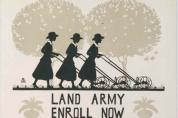 |
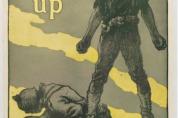 World War I-era poster created by the United States Food Administration urging Americans to "don't let up" - and to keep saving food. The poster depicts an American man, with clenched fists, standing firmly over a collapsed German soldier. |
 This image is propaganda from Word War I created by the Food Administration urging people to be less wasteful in order to help our allies in Europe. By eating less at home, American soliders would be well fed and able to defeat Germany. |
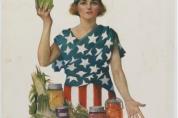 This image is propaganda from World War I. It was produced by the National War Garden Commission, and it was meant to persuade woman to can their own food to aid in the War efforts. |
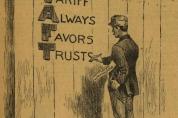 This cartoon is making fun of President Taft by saying that the tariffs put in place favor trusts rather than the workingman. |
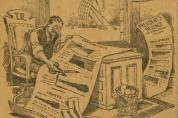 President Theodore Roosevelt was known as the trust buster, yet this cartoon pokes fun at that idea as it depicts Roosevelt cutting out all the "clubs" from his presidential plan. It also shows a wilting building labled "financial situation" in the background. |
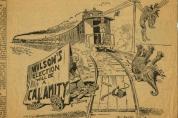 This cartoon is from the 1912 Presidential Election and shows Woodrow Wilson as the new President on his way to Washington. The moose is Theodore Roosevelt since he ran under the Bull Moose Party and the Elephant is William Taft since he ran as the Republican candidate. |
 This cartoon was created in 1908, and it depicts Standard Oil as a snake coiling around Uncle Sam. It is referencing the power of Standard Oil to control the government. |
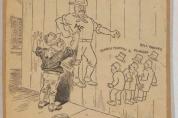 This cartoon is referencing Theodore Roosevelt’s political fight with William Barnes. He charged Barnes with political corruption after Barnes repeatedly opposed Roosevelt within the Republican Party. Roosevelt claimed that Barnes worked with Charles Murphy and created a corrupted government. Roosevelt eventually won the trial against Barnes, ending Barnes political career. |
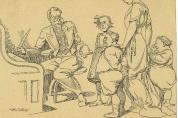 This cartoon is referencing the 1912 presidential election where former President Theodore Roosevelt ran under the Bull Moose Party Platform against President William Taft and Democratic Candidate Woodrow Wilson. |
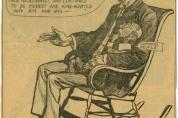 This cartoon presents John D. Rockefeller telling a bedtime story to the child in his arms that is labeled “common people.” It is referencing Rockefeller’s business tactics and poking fun at how he came to corner the oil market. |
 This cartoon is referencing the "Panic of 1907" that caused several banks and trusts to fail. Although it was quickly quelled, it is known as the first modern day banking panic where people began to question banking procedures. |
- ‹ previous
- 6 of 22
- next ›